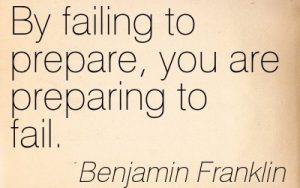 Being in this music industry for at least…. well, a lot of years, I’ve seen many artists “wing it”. There’s nothing wrong with learning as we go, because that’s life.
Being in this music industry for at least…. well, a lot of years, I’ve seen many artists “wing it”. There’s nothing wrong with learning as we go, because that’s life.
But I can’t tell you how many times I’ve gone to a show (sometimes a big show!) and I watch the artist backstage with their band or producer. It’s thirty minutes before the show, and what are they doing? They’re writing out a set list! And, depending on where someone has to change a guitar or whatever, they put a big “T” for talk. Someone needs to talk… right there.
So we string songs together, we put in a couple of places where we’re going to “talk” to the audience, and then we go out and “wing it”. And, some nights the planets align, the spirit falls, it happens, and it’s a beautiful thing.
But in most cases it’s just… OK. Some nights it’s disastrous, a few nights it’s magical – and on most nights it’s hit and miss. One song works, one doesn’t, and it might feel like you’re playing tug of war with the audience.
To me, that’s “winging it”.
Here’s another example of “winging it”. You’re in the middle of a song, and all of a sudden you feel like you should do something, but you have no idea what to do, so you do something physically – move somewhere or whatever – and you “wing it”.
We need to have a plan. We need preparation before we walk out onstage. We need to be comfortable with movement. We need to know the fundamentals of being onstage in front of an audience.
Everyone really knows this, (to some degree anyway), because we all prepare for some of what we’re doing onstage. Typically we prepare musically and vocally. We have rehearsals of varying kinds and to different degrees. In some way, we all prepare to be onstage.
But to what degree should we prepare? We don’t want to over-prepare. Well, there is a method to this madness of preparation! (I call it my Live Music Method.)
There are three simple places you need to prepare (simple conceptually, that is):
-
2. You need to plan your show.
-
3. You need to rehearse properly.



This post is long on stuff I already understand, and short on the substance in terms of what I’d really like to hear about. Maybe some of your readers need to be talked to about playing the guitar in the parameters of the instrument and the amp you’re using, or any of the other examples you give. I already get that stuff. I skimmed all the way through all that only to have you say there are rules about stage presentation buy my book. What I would like to see is a blog where you take some aspect of what it is you teach and get a little into the weeds with it. Talk about those rules, instead of just telling me stuff I already know.
Hey Michelle,
Thank you for your comment! I totally get it. You might be new to our website and blogs, but here’s what’s up.
Some blogs are meant to inspire artists to really work at their performance stage craft. Tom has hundreds of hours of material and has spent decades developing his method for performance….and he’s still constantly learning! And yes, he does sell product. That’s how he makes a living, much like an artist makes a living off their shows and music….(hopefully..) And, that’s what Tom is trying to help you do…make more money by having a great live show!
Some blogs are on specific skills (Watch for next week’s blog on accepting applause..), but here the danger is that an artist will take one small aspect/skill of a live show and incorporate only that one skill and when they don’t get the response they want, they nix the concept and go back to their previous habits.
Working on stage performance is much like learning your instrument or writing songs. It takes time and practice and that’s what we’re trying to teach artists. That’s why Tom published his book. (and produced his DVD series) The book is just over 400 pages, took months to write and tens of thousands of dollars to produce. It’s used in some college music programs and thousands of artists tell us it has helped them continue on in their careers and actually make a living. As one artist put it:
“The Live Music Method by Tom Jackson is indispensable – it belongs, frayed edges and inky fingerprints in the margins, on the session table of every live musician, every producer, every soulsingin’ Sinatra, every eggshakin’ rumba-daddy, and every hip-jivin’ honey in the music industry today. Don’t waste your time – check your rock star ego at the merch table, buy a copy of his book for each of your band mates, and learn how to fall in love with your audience again!” ….Jay Fiori (Tree Dragon)
So, all that to say, hang in there, I think you’ll be happy you did! Tom Jackson and Amy Wolter both give free advice to help you with your career, but they also have to live and feed their families….me being one of them….:) Sincerely, Susan Jackson